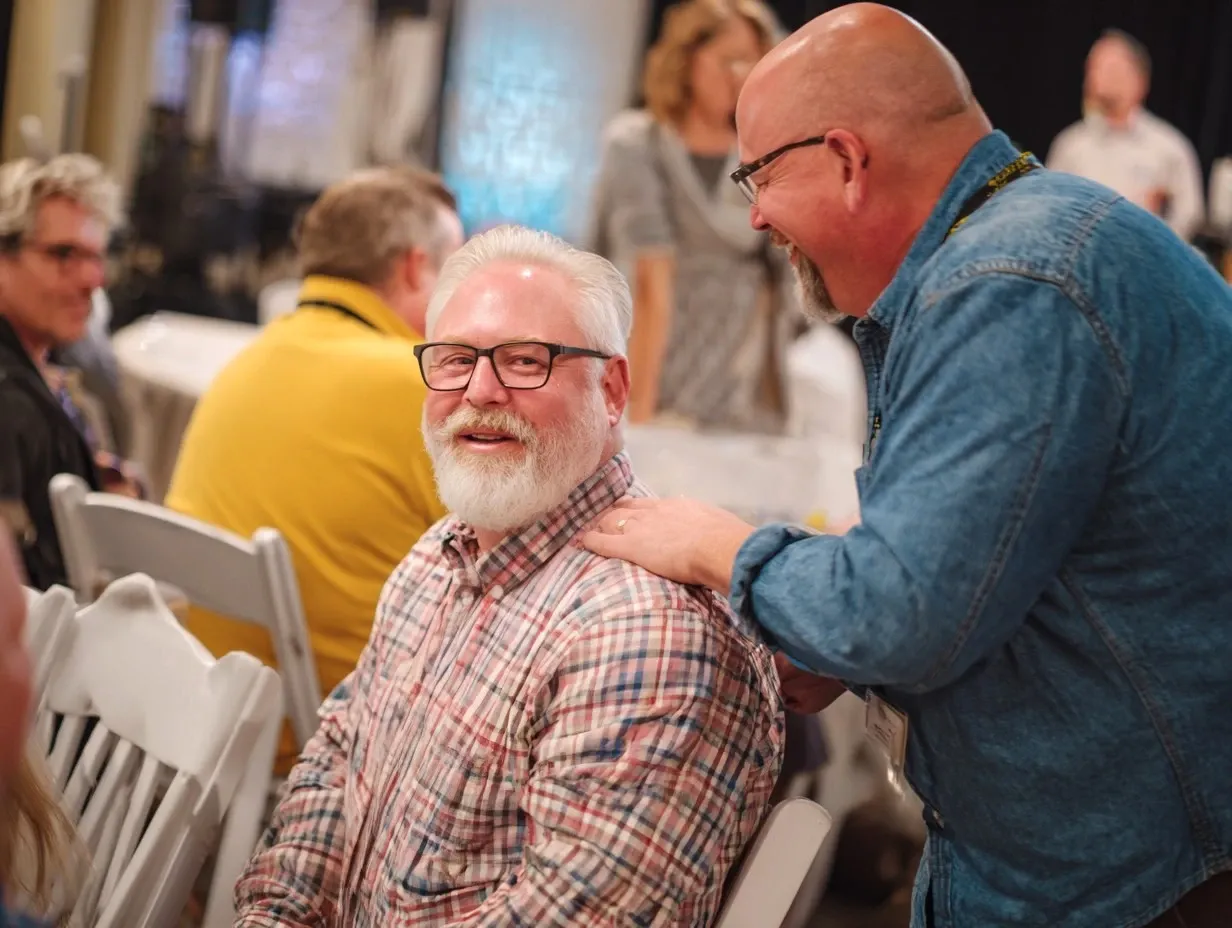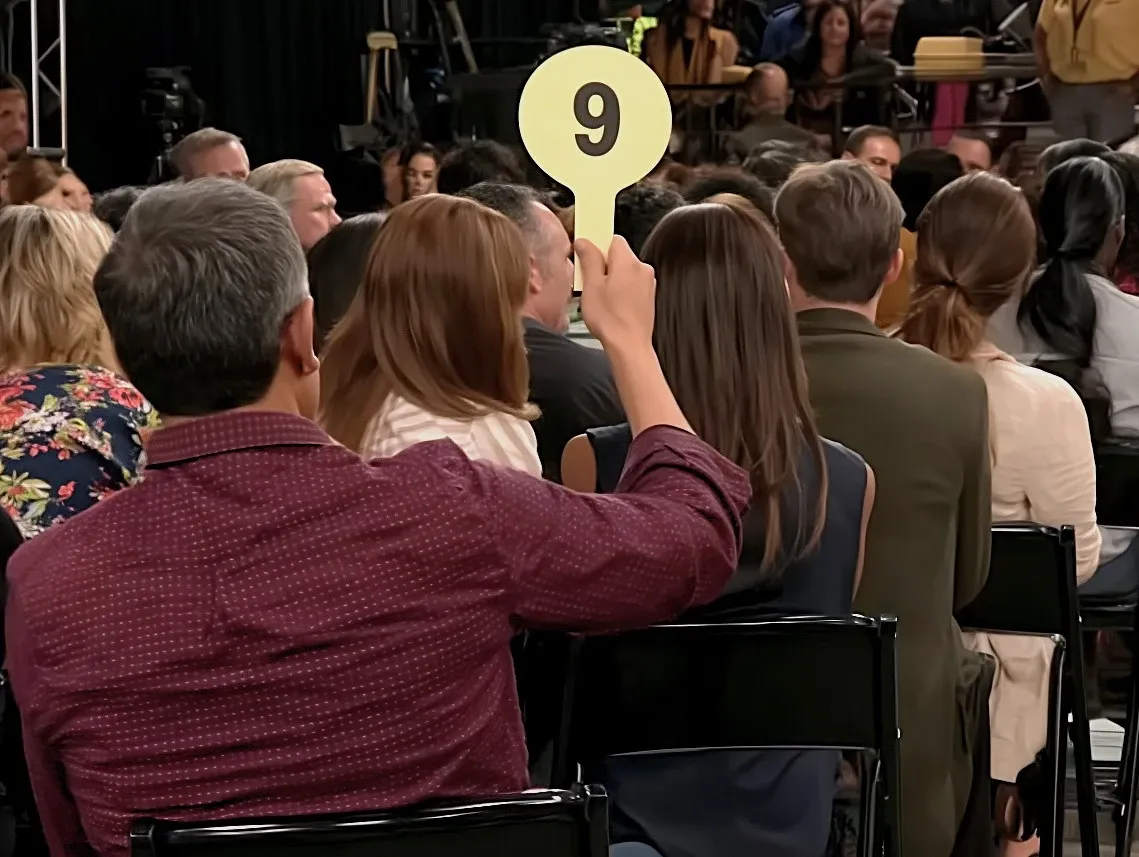It’s your annual fundraising board meeting. You’re brainstorming new fundraising ideas, and a board member suggests, “We should host an auction at our next gala.”
But you’re skeptical, and rightfully so. You’ll be the one putting in the work or investing the upfront costs, and you want to know if you’ll get a solid ROI.
The research should put your doubts to rest. The latest fundraising data shows that you can achieve a fantastic ROI with your nonprofit or school’s auction, whether you’re adding it to a gala or hosting a standalone auction.
We’ve compiled the 20 best charity auction statistics proving charity auction ROI from the 2024 Fundraising Outlook and 2025 State of Nonprofit Auctions Report. We’ll analyze what the data means and how it can help you earn the highest returns at your next auction.
Ready to Earn $10,000+ with Your Auction?
Earn more with auction software that optimizes your fundraiser.
Start Your Auction for FreeAre Fundraising Events Still Worth It?
Chances are, you’ve been handed a pretty small budget. You may be wondering if hosting any type of fundraising event—especially costly in-person ones—is even worth it, or if you should stick to asking for direct donations.
According to the surveys and reports, the vast majority of nonprofits still rely on events to raise money.
The reason most organizations continue to host fundraising events is simple—they work. Events will propel your organization closer to its mission and goals.
It’s not just the million-dollar organizations with thousands of attendees that are meeting their goals. Many small, local nonprofits see great success with events:
So don’t let the size of your budget or your organization discourage you. You can still earn a high fundraising ROI with events.
Beyond raising funds for your cause, fundraising events can give you a return on your investment through other avenues.
Events have a huge social component, and many donors are what we call social donors, meaning their motivation to give is strongly connected to seeing their friends and community donate and interacting in-person with the organization. Events give you access to those social donors and the major gifts that come with their participation.
Events are also a great opportunity to show your donors the impact they’re making. Many donors aren’t watching all your social media updates, so live events are the perfect time to share behind-the-scenes videos, testimonials from those you’ve helped, and the latest heartwarming stories. Donors look forward to this every year and love seeing how they’re making a difference!

Do Auction Fundraisers Provide a Good ROI?
What about auctions specifically? What’s the ROI on those?
The ROI varies drastically between organizations. But you can expect to raise $10,000+ with an auction if you play your cards right. And we’ve seen auctions raise much more than that—from $50,000 to over $100,000.
The fundraising research tells the same story about auctions—this kind of event can raise a lot of money for your organization.
When comparing the revenue from in-person auctions, online giving campaigns, in-person donation events, virtual events, runs/walks/rides events, DIY peer-to-peer campaigns, ticket sales, and golf outings, can you guess which event came out on top?
It’s clear that organizations are overwhelmingly happy with their auction results and are raising a consistent amount of money from auctions.
77% of nonprofits see consistent or increased revenue from subsequent auctions.
The average gift amount from auction donors is $529 (compared to the $191 average for social donors).
(The 2025 State of Nonprofit Auctions Report)
Social donors in this report were defined as “a group that contributes through a variety of channels like galas, golf tournaments, peer-to-peer fundraising, and auctions.”
But as we stated earlier, there’s more to ROI than dollars raised. One valuable return on investment from auctions comes from recruiting long-term, loyal donors.
83% of auction attendees said they were likely to become annual donors.
91% of auction attendees said they were likely to make a one-time donation in the 12 months after the auction.
(The 2025 State of Nonprofit Auctions Report)
Lastly, the reports show us the donor’s side of things. Looking at the feedback attendees gave, we can see that their experience was nothing but positive.
Of course, your ROI will depend on how well you run your auction. Let’s look at what the data says about how to get amazing returns from your auction.

How Can You Maximize Your Auction ROI?
The data revealed what makes an auction effective by tracking what donors found the most engaging (meaning what influenced them to give).
Here are the top answers donors provided.
63% answered “testimonials from people benefiting from the organization’s work.”
58% answered “ability to socialize with other guests.”
58% answered “the speakers.”
58% answered “having a wide range of items.”
54% answered “hearing about the impact of [their] donation.”
53% answered “availability of multiple affordable items.”
(The 2025 State of Nonprofit Auctions Report)
When we see what really matters to donors, we can form an auction strategy to increase donations and raise auction ROI:
- Put the focus on your beneficiaries. Include plenty of stories, videos, and testimonials to demonstrate donors’ impact.
- Add an in-person component to your event to incorporate the social aspect of giving.
- Hire an amazing auctioneer who can maintain positive energy throughout your event.
- Diversify your auction items to appeal to both major donors and smaller donors.
Technology also plays a key role in keeping your donors engaged, happy, and willing to donate. Features like mobile bidding are becoming more popular at fundraising events and can make the bidding experience more convenient.
Other statistics from the report show that including a live donation appeal can increase your auction revenue. A live donation appeal is a short, direct ask for donations at an event, paired with emotional storytelling to raise money for a specific need.
65% of organizations said they met or exceeded their appeal goals.
(The 2025 State of Nonprofit Auctions Report)

How Can You Mitigate Risk for a First-Time Auction?
We understand if you’re still worried about making your time and money worthwhile when hosting an auction. It’s not a small investment, and when you’re just starting, you’re putting a lot on the line to get the ball rolling.
Here are the best precautions you can take to mitigate risk and ensure you don’t lose out with a charity auction:
- Attend another organization’s auction first. You’ll see how it’s done so you’re not going in blind.
- Take event planning seriously. Luck doesn’t determine which auctions succeed versus which auctions fail—the organizations that reach their fundraising goals put in the time required to create a great experience for donors.
- Recruit a seasoned event planner or a volunteer who’s set up an auction before.
- Start online. Online auctions involve far fewer expenses and less time, giving you more room to experiment and find out what works for your organization.
- Choose fundraising software with percentage-based fees instead of flat fees. This pricing model guarantees that the money invested into software is less than the amount you raise, so you don’t burn through your budget trying to get started.
- Attract as many attendees as you can. Even if many guests don’t bid, you’ll have more chances of people placing bids.

Which Auction Software is Best for First-Time Auctions?
For beginners and small nonprofits, we recommend starting with something simple: CharityAuctions.com. The auction platform has helped raise over $1 billion for nonprofits and schools.
With CharityAuctions, you get charged a small percentage of your winnings, meaning you only get charged when you succeed. You can customize how much you pay in fees as well.
For more auction strategies, see our complete Auction Best Practices Guide.
Frequently Asked Questions
What does “charity auction ROI” mean?
Charity auction ROI (return on investment) is the net revenue your event generates compared to the total cost of running it. In short: (Total money raised – all expenses) ÷ all expenses. It helps you judge if the event was worth the time and money.
How do we quickly plan a high-ROI auction?
- Set a clear fundraising goal and item count.
- Secure 8–12 marquee items + a range of accessible items.
- Pick simple software and enable mobile bidding.
- Plan a short, emotional live appeal (paddle raise).
- Promote with deadline-driven emails and VIP outreach.
What costs should we include when calculating ROI?
- Venue, AV, food & beverage (or online platform fees).
- Marketing, printing, signage, decor, shipping/fulfillment.
- Staff/volunteer time (estimate hours × hourly value).
- Payment processing and software fees.
General information, not legal/tax/financial advice.
What drives the best auction ROI consistently?
- Compelling storytelling and beneficiary testimonials.
- Strong social experience and energetic emcee/auctioneer.
- Diverse catalog: few premium anchors + many affordable items.
- Frictionless bidding on phones; short, engaging run time.
What’s a realistic planning timeline for ROI?
- 8–12 weeks out: set goal, recruit committee, secure venue/platform.
- 6–8 weeks: source marquee items and sponsorships.
- 4–6 weeks: launch tickets/registration and item teasers.
- 2–3 weeks: finalize appeal, rehearse run-of-show.
- 0–7 days: last-chance promos; publish bidding rules and FAQs.
Which KPIs should we track to measure ROI and success?
- Total gross raised; net after expenses; ROI ratio.
- Average gift, median bid, % items with bids, sell-through rate.
- Bidder conversion (% registered who bid); mobile bid share.
- Appeal participation rate and average pledge.
- New vs. returning donors; post-event second-gift rate.
How should we structure our item catalog for ROI?
Aim for a pyramid: a handful of premium experiences to spark competition, a strong middle of desirable mid-price items, and many wallet-friendly items so most guests can win something. Avoid too many similar items that split bidding.
How do we run a high-yield live appeal (paddle raise)?
- Tee up with a 60–90s impact story and a clear, urgent need.
- Sequence giving levels (e.g., $5k, $2.5k, $1k, $500, $250, $100).
- Keep momentum; celebrate quickly; show real-time tally.
Micro-script: “In the next 90 seconds, your gift funds [specific outcome]. If you can start us at $5,000, please raise your paddle…”
Do mobile bidding and reminders improve ROI?
Yes. Mobile bidding, outbid notifications, and clear closing times reduce friction and increase participation. More engaged bidders = more bids per item, higher sell-through, and stronger net results.
How can first-time teams reduce risk and protect ROI?
- Pilot an online or hybrid format to lower expenses.
- Observe another successful auction’s run-of-show.
- Use percentage-based software fees to align costs with results.
- Set a realistic catalog size and avoid overproduction.
How do sponsorships improve ROI beyond bids?
Create tiered benefits (naming, stage mentions, signage, VIP tables) and tie them to mission outcomes. Sponsorships offset core costs so more auction revenue becomes net. General information, not legal/tax/financial advice.
Is there a simple way to estimate ROI before launch?
Use: Projected Net = (Avg bids per item × avg final price × #items) + appeal + sponsorships – all costs. Then ROI = Projected Net ÷ all costs. Adjust assumptions for ticket sales, fees, and contingencies. General information, not legal/tax/financial advice.
How does an auction boost long-term donor value?
Events create memorable, social experiences that convert attendees into annual donors. Track second gifts within 12 months, recurring enrollments, and upgrades—these post-event revenues belong in your ROI picture too.
What’s a smart promo plan to maximize bidding?
- Announce early; reveal marquee items in waves.
- Use deadlines: early-bird tickets, bid windows, final countdown.
- Personal outreach to VIPs and past top bidders.
- Clear FAQs on how to register, bid, and pay.
How do we handle fulfillment without hurting ROI?
Publish pickup/shipping options up front, collect winner details at checkout, and batch shipments. For experiences, use clear redemption windows and contacts. Efficient fulfillment preserves staff time and donor satisfaction.
What mistakes commonly reduce ROI—and how do we avoid them?
- Overly long programs—keep it tight and engaging.
- Too many similar items—curate for variety.
- Late promotion—start earlier with clear CTAs.
- No appeal or weak story—rehearse and script it.
What should we do after the auction to extend ROI?
- Send receipts + impact thank-you within 24–48 hours.
- Invite winners to a tour or update call within 30 days.
- Offer a monthly gift option and next event save-the-date.
- Report results to your board with KPI trends and lessons.
Follow-up note template: “Your bid funded [impact]. We’d love to show you the work—can we host you for a brief visit next month?”
How should we report ROI to our board for decisions?
Create a one-page summary: goals vs. actuals, net and ROI, KPI dashboard, key takeaways, and next-time improvements. Include multi-year trends to show consistency. General information, not legal/tax/financial advice.
Which fee structures help protect ROI if we’re new to auctions?
Consider percentage-based or success-based platform fees so technology costs scale with results. This can lower upfront risk compared to large fixed fees. General information, not legal/tax/financial advice.
What outcomes should we consider a successful ROI?
Success looks like strong net revenue, healthy sell-through, broad bidder participation, a high appeal response, and clear post-event donor retention. Track year-over-year consistency more than any single “magic” number.
💡 Try this in ChatGPT
- Summarize the article "Are Charity Auctions Worth the Investment? The Data Says Yes" from https://blog.charityauctions.com/charity-auction-roi/ in 3 bullet points for a board update.
- Turn the article "Are Charity Auctions Worth the Investment? The Data Says Yes" (https://blog.charityauctions.com/charity-auction-roi/) into a 60-second talking script with one example and one CTA.
- Extract 5 SEO keywords and 3 internal link ideas from "Are Charity Auctions Worth the Investment? The Data Says Yes": https://blog.charityauctions.com/charity-auction-roi/.
- Create 3 tweet ideas and a LinkedIn post that expand on this FAQ topic using the article at https://blog.charityauctions.com/charity-auction-roi/.
Tip: Paste the whole prompt (with the URL) so the AI can fetch context.
Share this article
Tom Kelly, TEDx speaker and CEO of CharityAuctions.com, helps nonprofits raise millions through auctions and AI. He hosts The Million Dollar Nonprofit podcast and inspires leaders to live their legacy, not just leave it.
Table of contents
Create Your Auction
Raise 40% more with smart bidding tools


